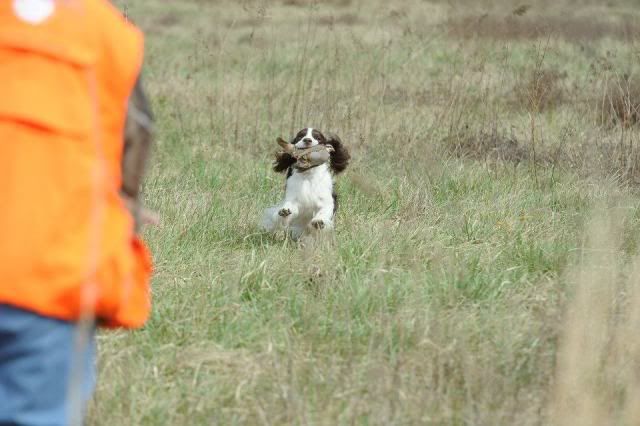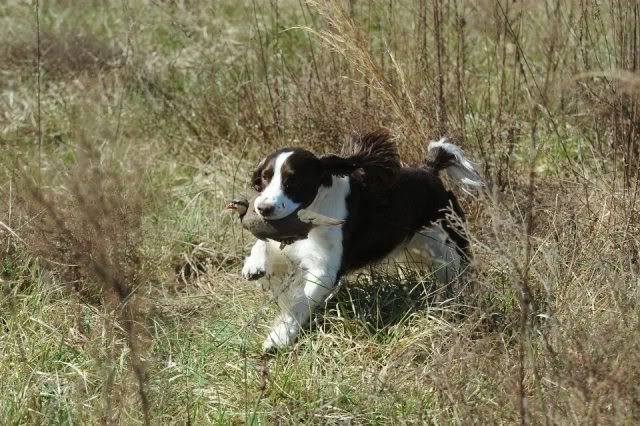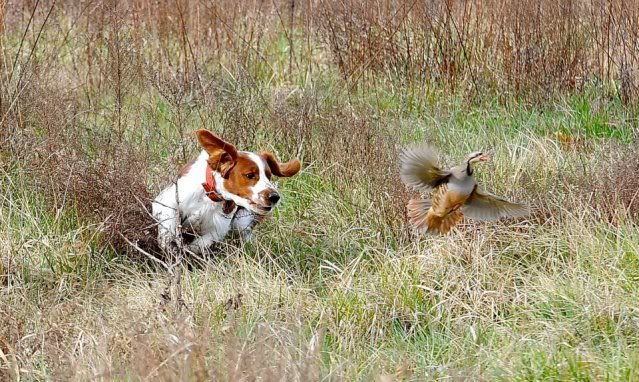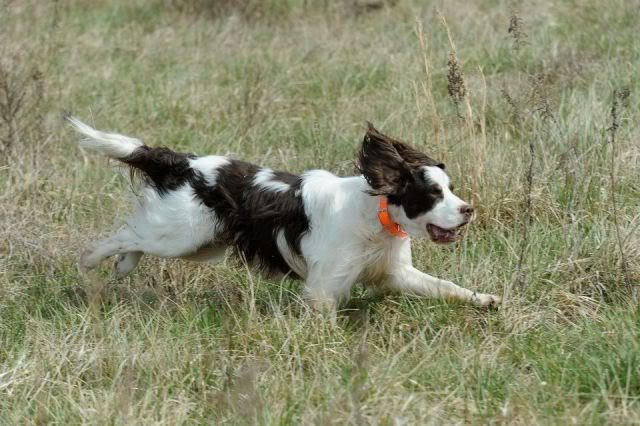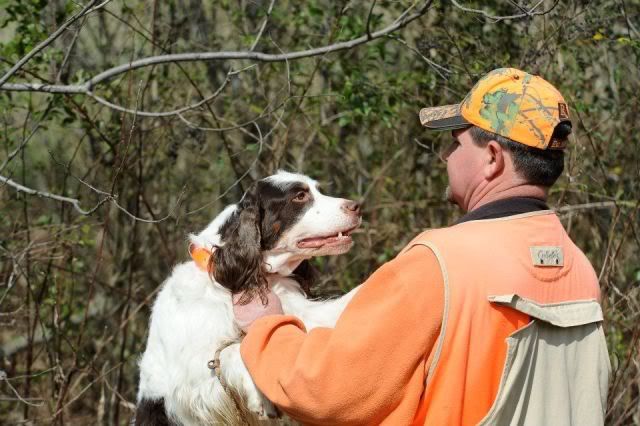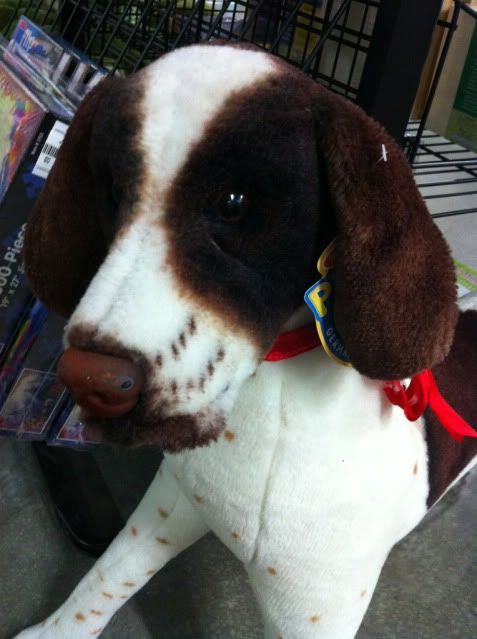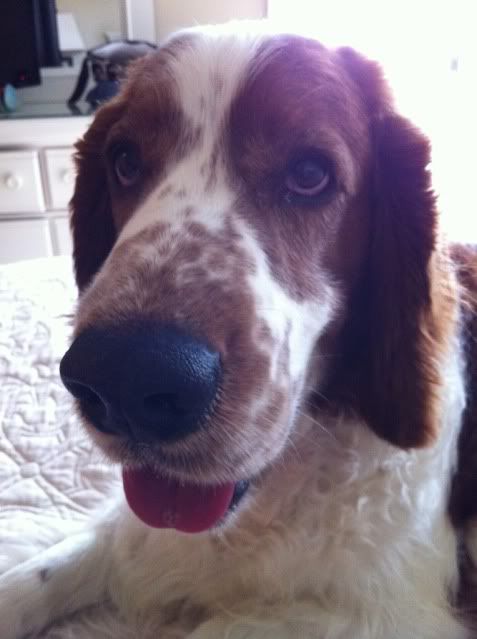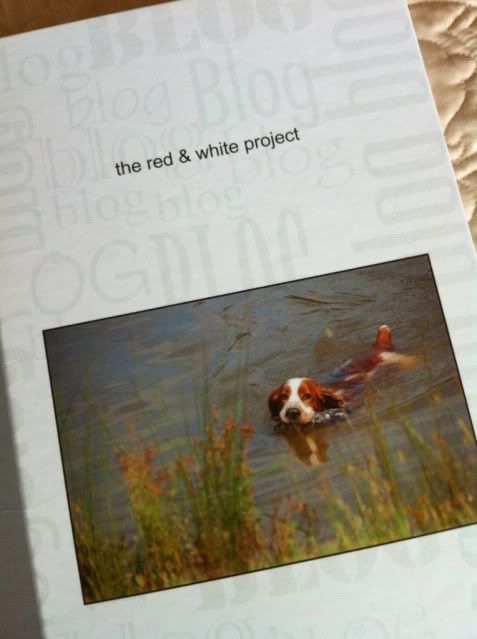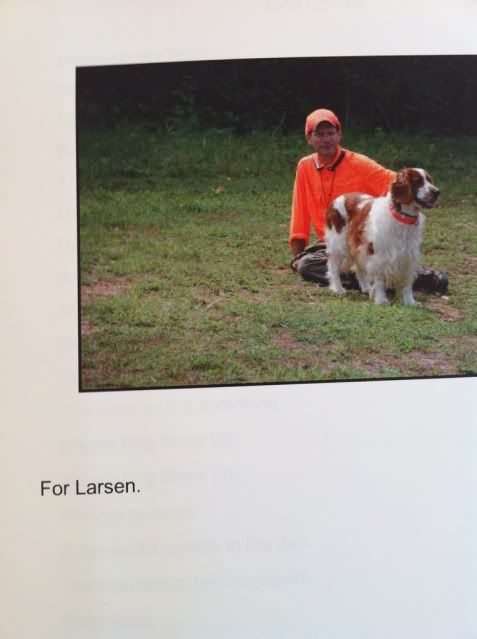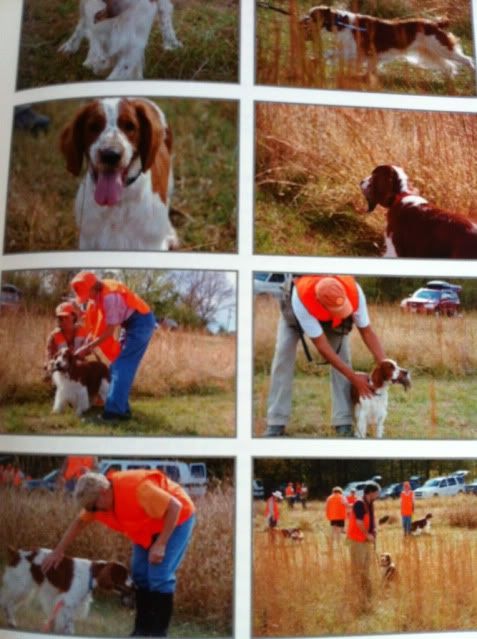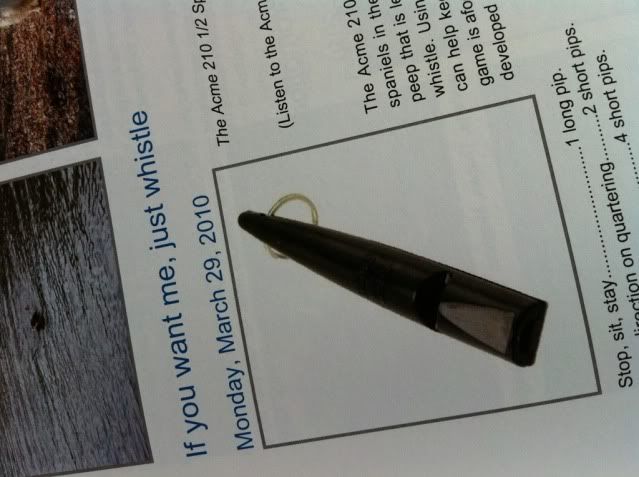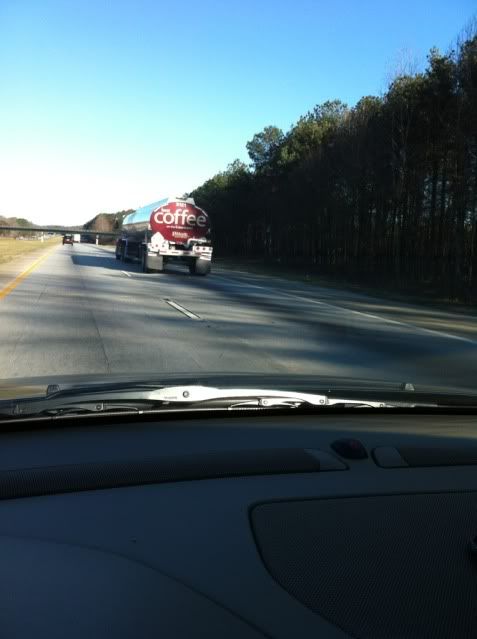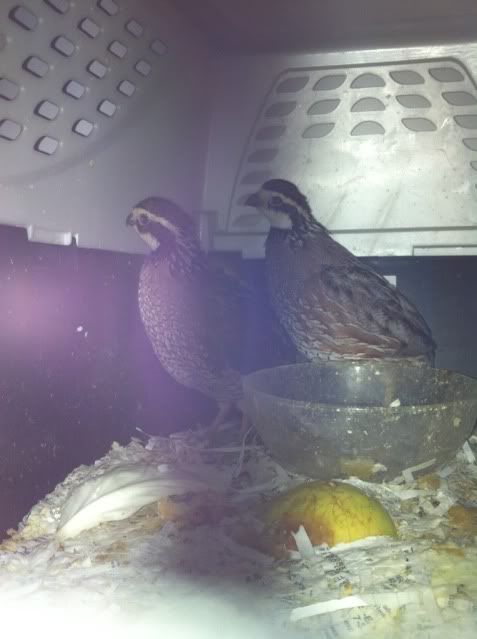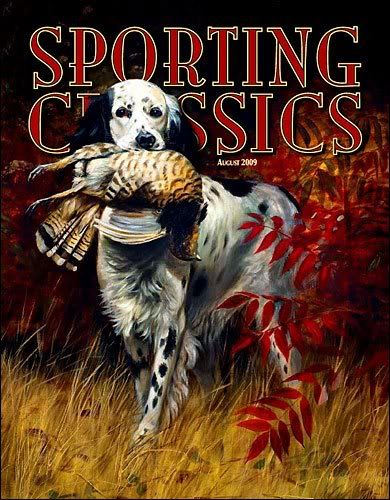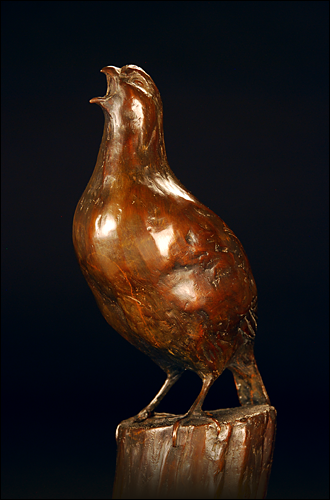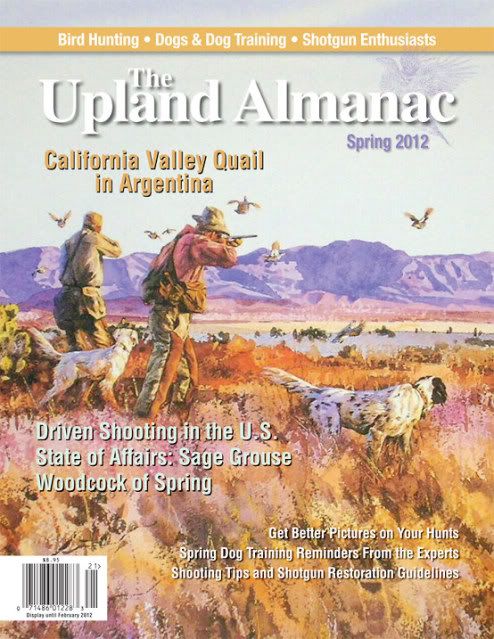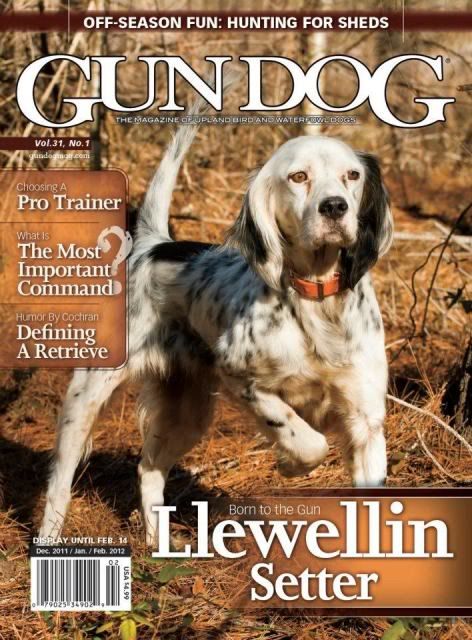We practiced on a cold day that got progressively clearer. It warmed up in the sunshine, as you might expect in Alabama, but remained cold under the trees.
We had a nice group, with Marilyn's Graham, Shoni's Sunny, Mary's Caden. Another group included Susan's Tatum, Betsy's Spike, Adrean's Cobbie, Coralie's Rowdy, and Roger & Kristie's new little dog (name unknown to me).
Larsen ran without a check cord, and he took off several times for fly-away birds. His recall was very good. Very good indeed. But we are working on being steady. Larsen's quartering on the first go-round was sloppy. Marilyn thought he was anticipating the game. On the second turn, it was much better. He hunted with true verve.
I will have to ask Joe DeMarkis on how to run that drill. Those long run-offs clearly did not help with steadying. I may have to retreat a step or two and just toss the birds about him and whistle him to a sit.
As I reconsidered the day, I wonder if having skipped the bird toss on our second turn was a mistake.
At day's end, I decided to do some water work with him. The others decided to head out, so we went to the pond by ourselves. We did a little landwork. I planted some very long hunt deads, with him watching me from a hupped position. He loves hunt deads and delights in showing me what a smart dog he is. He sits patiently while I head out across the way and hide the bird (in his full sight) out in the woods somewhere. When I return and send him, he takes off at full steam, finds that bird, and heads back. He is so smart.
We did a few hunt deads and then decided to do a water blind. This is, in fact, a hunt dead that crosses water. I sent him across the rivulet, and he found the bird without any direction. We then did a full-fledged pond retrieve and one more hunt dead for fun.
During this, Larsen's returns were a bit short, but this changed when I changed. It was just Larsen and me, after all, in the waning afternoon. I looked at the blue sky and felt the new chill as the sun tipped down and I relaxed. I decided just to look away from him as he came in. I let Larsen hold (but not pluck at) the retrieved bird. All was right. As you might expect where this is going, his retrieves were right to hand.
A happy end to a day when otherwise there was not a lot to show. Maybe we made some progress after all.
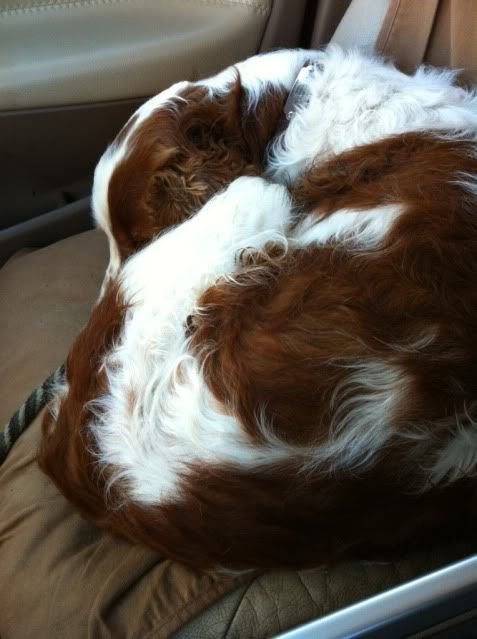 Larsen finds a spot in the front car seat after a tough practice.
Larsen finds a spot in the front car seat after a tough practice.
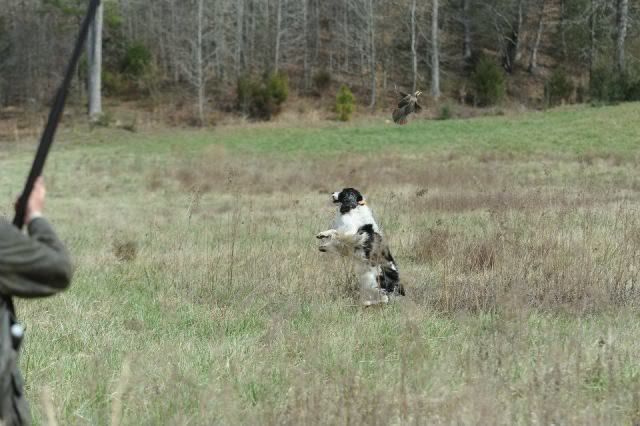 Hampton appears to come out of his shoes to flush a bird. He is hupping on the flush.
Hampton appears to come out of his shoes to flush a bird. He is hupping on the flush.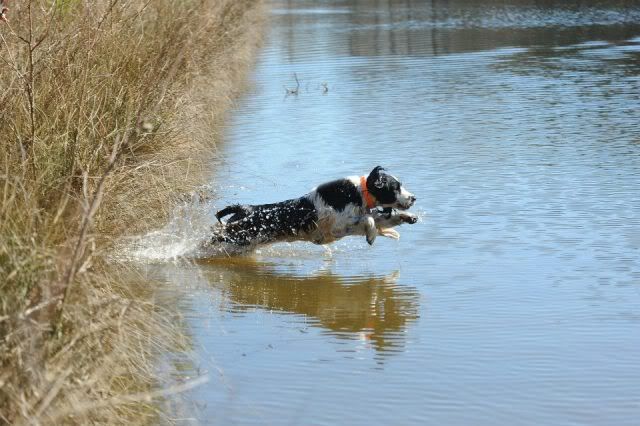 The energetic beauty of an English Springer Spaniel
The energetic beauty of an English Springer Spaniel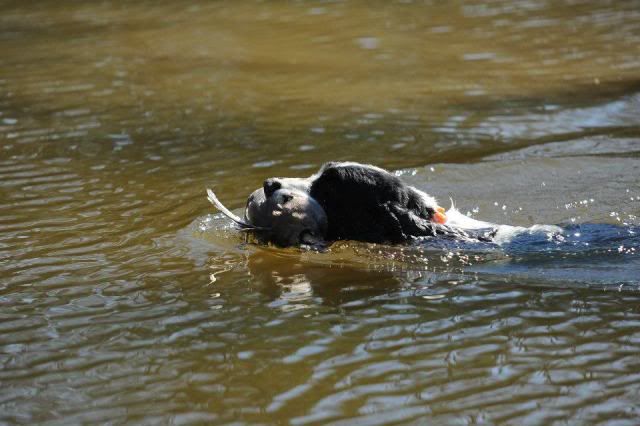 A dog with a job to do.
A dog with a job to do.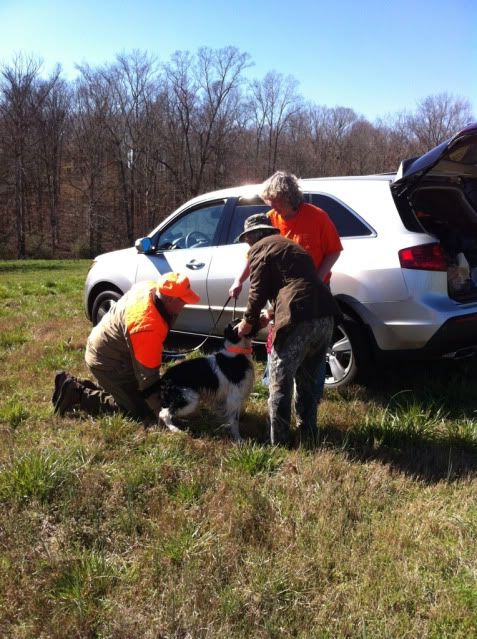 Bill and Sandy get a chance to celebrate with a soaking wet gundog as Marilyn looks on.
Bill and Sandy get a chance to celebrate with a soaking wet gundog as Marilyn looks on. 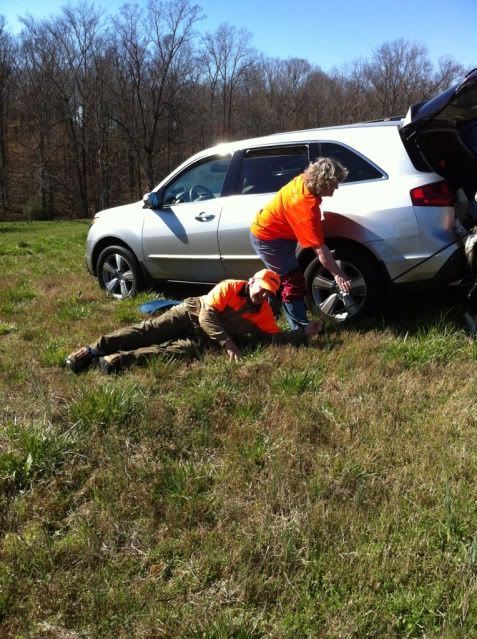 Bill gets dragged across the field as Hampton tries to corral his posse.
Bill gets dragged across the field as Hampton tries to corral his posse.


